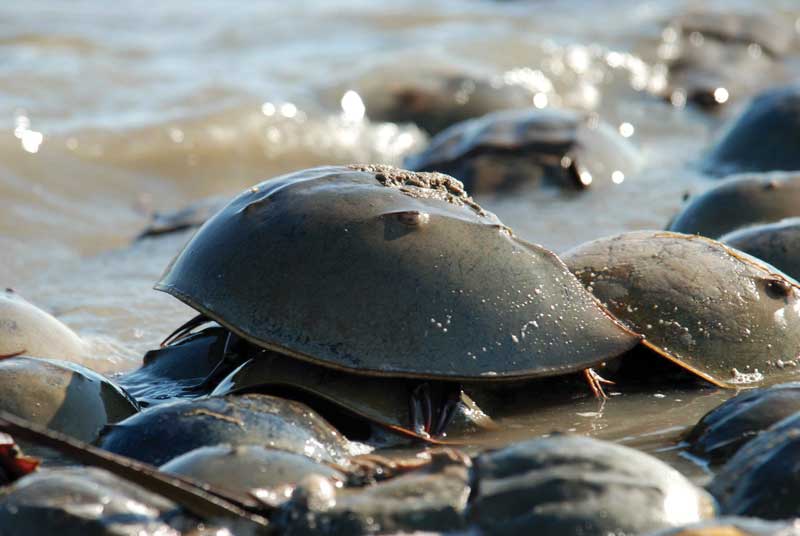The Center for Biological Diversity and 22 partner organizations petitioned NOAA Fisheries to list the American horseshoe crab as an endangered species under the Endangered Species Act. Horseshoe crab populations have crashed in recent decades because of overharvesting and habitat loss.

“We’re wiping out one of the world’s oldest and toughest creatures,” said Will Harlan, a senior scientist at the Center for Biological Diversity. “These living fossils urgently need Endangered Species Act protection. Horseshoe crabs have saved countless human lives, and now we should return the favor.”
Nearly twice as old as the dinosaurs, horseshoe crabs have been crawling ashore for more than 450 million years. In the past three decades, however, horseshoe crab populations have declined by two-thirds in Delaware Bay, their largest population stronghold.
Horseshoe crabs are harvested for use as bait by the commercial whelk and eel fisheries. Even though horseshoe crab populations have fallen to historic lows, regulators have increased horseshoe crab harvest quotas.
Biomedical companies also harvest horseshoe crabs and drain their blue blood, which is used to detect toxins in drugs and medical devices. Horseshoe crab blood harvests have virtually doubled since 2017, with nearly one million horseshoe crabs harvested for their blood in 2022. Synthetic alternatives to horseshoe crab blood tests are already being used in Europe, but companies in the U.S. have been slow to adopt the alternatives.
Habitat loss is another dire threat to horseshoe crabs. Spawning beaches across their entire range are being destroyed by development, shoreline hardening, and sea-level rise.
As horseshoe crabs have declined, so have other species, most notably, the rufa red knot, a shorebird species that feeds on horseshoe crab eggs during its 19,000-mile migration from South America to the Arctic. It was listed as threatened under the Endangered Species Act in 2015. The listing decision cited the horseshoe crab harvest as one of the contributing factors to the red knot’s decline.
“It is clear from the available science that the current fisheries management policies are failing to protect and sustain these ancient mariners,” said Tim Dillingham, executive director of the American Littoral Society. “We must do more to keep them and the red knots and other life that depend on them from disappearing from this Earth.”